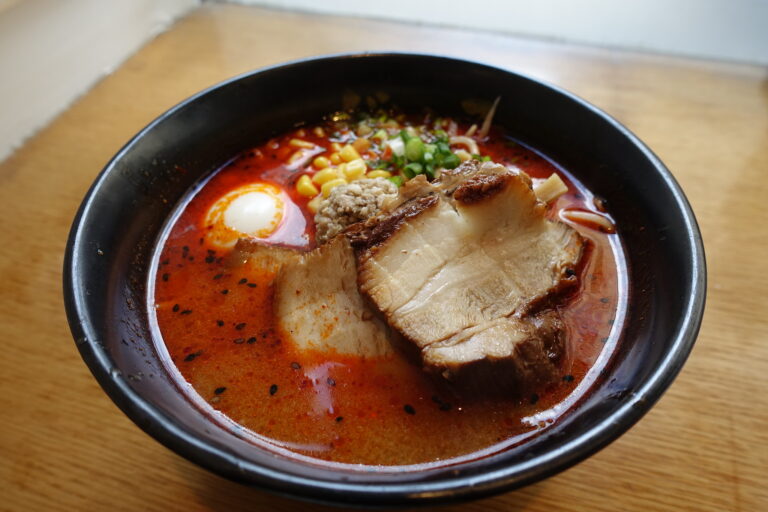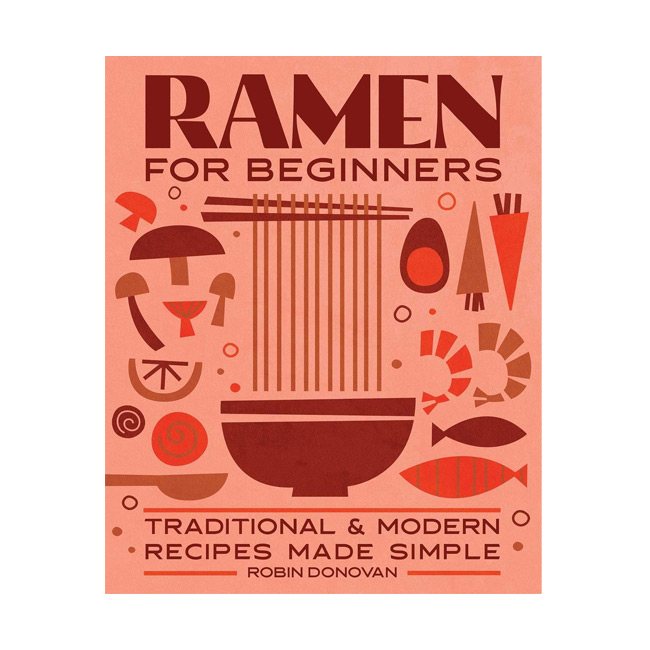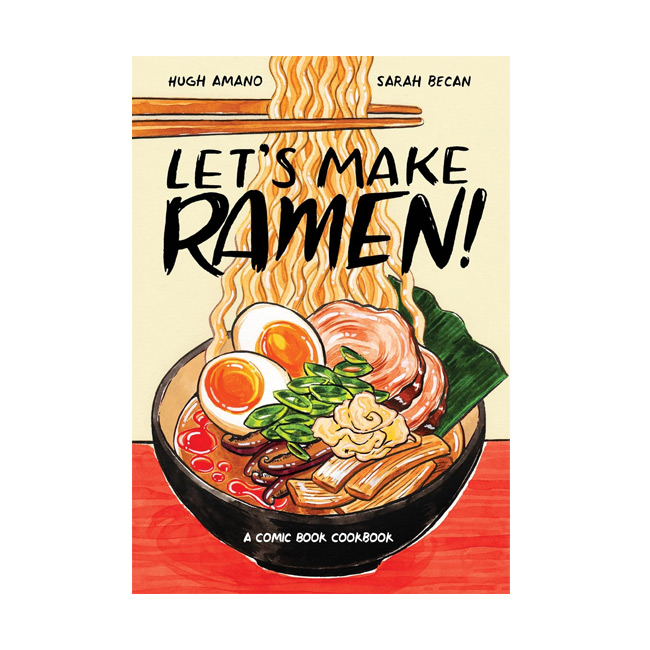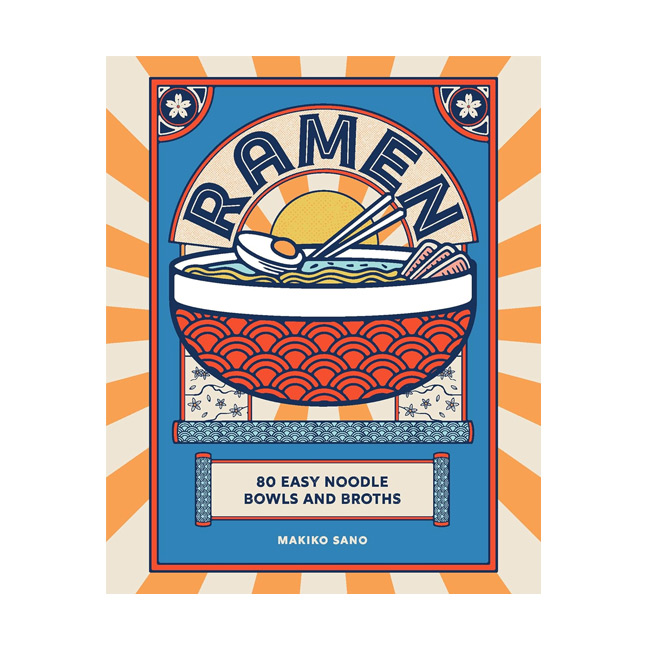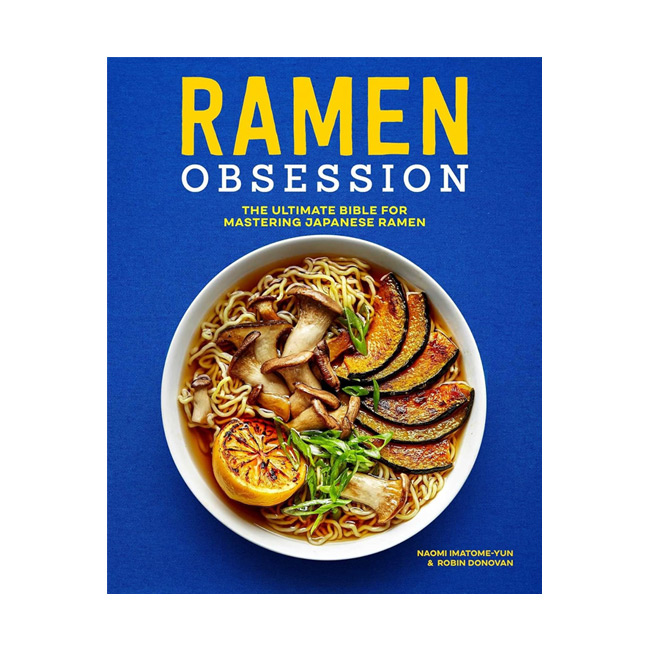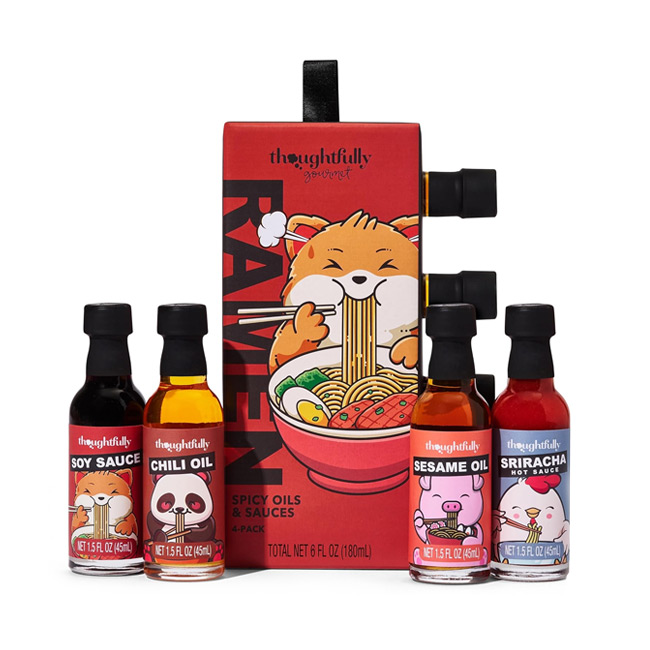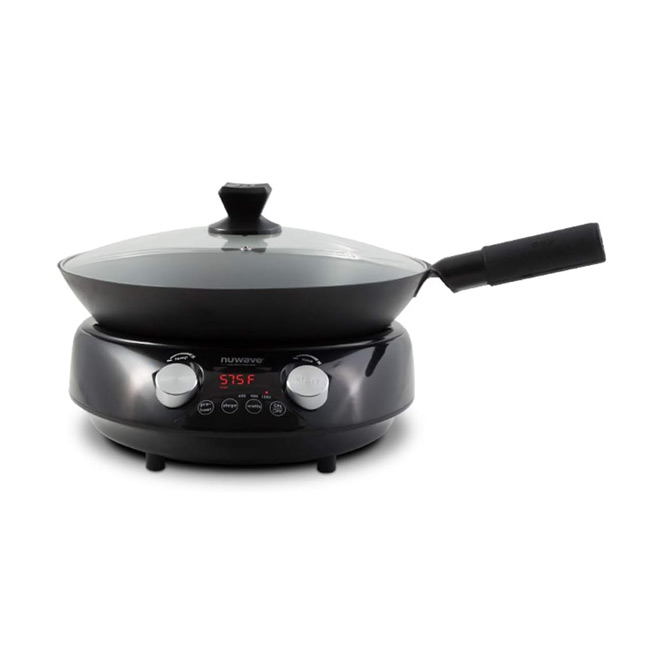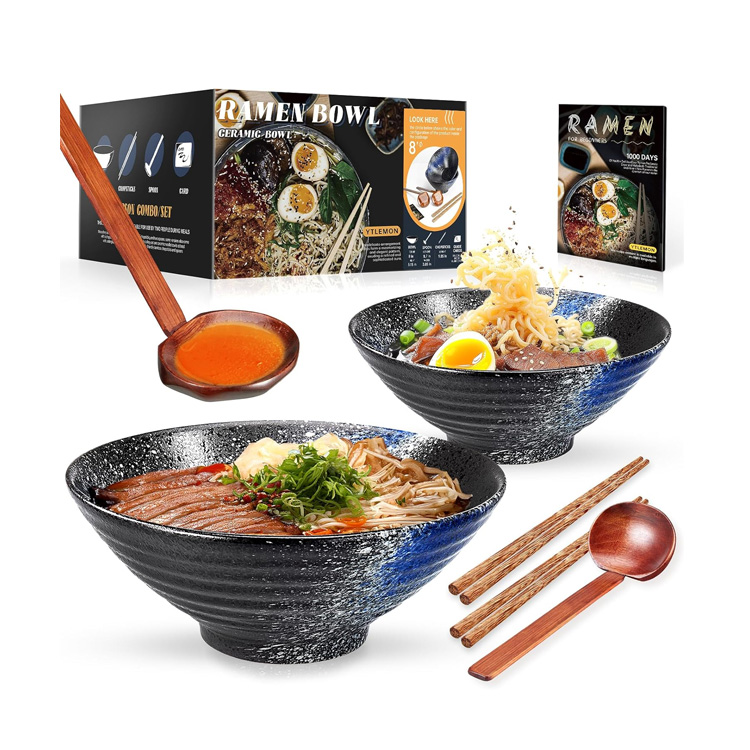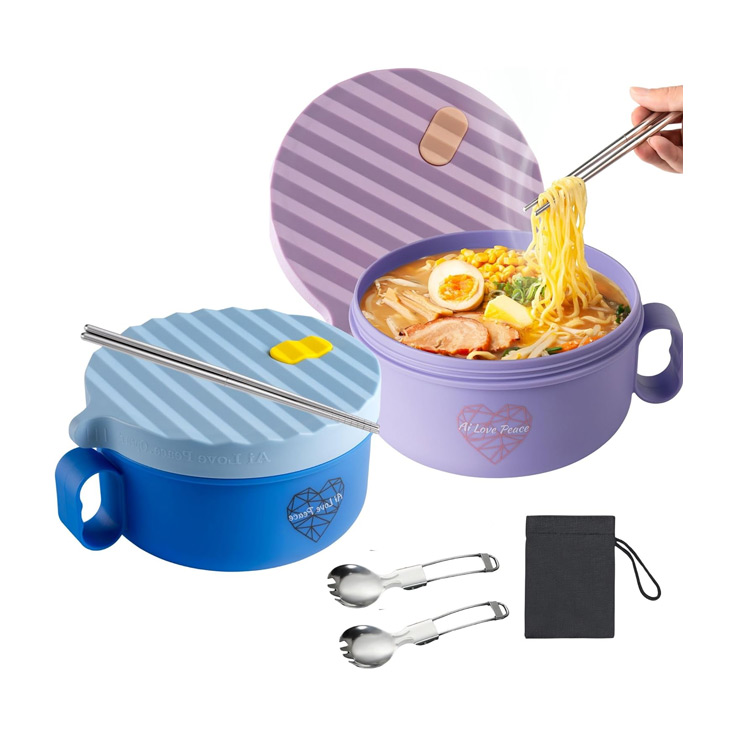Hakata ramen, originating from Fukuoka on Japan’s Kyushu island, is renowned for its rich, creamy, and intensely savory pork bone broth. This style of ramen features a tonkotsu (pork bone) broth that is simmered for hours to achieve a milky consistency and deep umami flavor.
The noodles are typically thin and firm, contrasting beautifully with the rich broth. Hakata ramen is beloved for its simplicity and depth of flavor, making it a popular choice among ramen enthusiasts. Its unique characteristics and flavorful profile make it a comforting and satisfying meal.
Hakata Ramen
Broth
The hallmark of Hakata ramen is its tonkotsu broth. Made by boiling pork bones, fat, and collagen over high heat for many hours, the broth becomes opaque and creamy.
This intense cooking process breaks down the marrow and collagen, resulting in a thick, hearty broth that is full of umami. Often seasoned with soy sauce and salt, the broth has a rich, savory flavor with a smooth, velvety texture that coats the noodles and toppings perfectly.
Hakata Ramen
Noodles
Hakata ramen features thin, straight noodles that are cooked to a firm (al dente) texture. These noodles are designed to hold up well in the rich tonkotsu broth without becoming too soft. Their slender shape allows them to absorb the broth’s flavors quickly, ensuring that each bite is flavorful and satisfying.
The firm texture of the noodles provides a pleasant contrast to the creamy broth, making the eating experience more enjoyable.
Hakata Ramen
Toppings
Typical toppings for Hakata ramen include slices of tender chashu (braised pork belly), which add a rich and savory element to the dish. Kikurage (wood ear mushrooms) provide a subtle earthy flavor and a pleasant crunch.
Negi (green onions) and pickled ginger (beni shoga) offer fresh, sharp contrasts that balance the richness of the broth. A marinated soft-boiled egg (ajitsuke tamago) with a creamy, slightly runny yolk enhances the overall richness. Nori (seaweed) adds a touch of umami and a different texture, making each bowl of Hakata ramen a well-rounded and flavorful meal.
A brief history of Hakata Ramen
Hakata ramen originated in the Hakata district of Fukuoka, Japan, during the mid-20th century. It was developed to cater to the busy lifestyles of the local population, particularly the workers at the nearby fish market.
Over the decades, Hakata ramen gained popularity beyond Fukuoka, spreading throughout Japan and eventually reaching international audiences. Its unique flavor profile and comforting qualities have made it a staple in the ramen world.
Today, Hakata ramen is celebrated for its rich history and its ability to deliver a deeply satisfying, comforting meal, maintaining its status as a beloved ramen variety both in Japan and around the globe.
Hakata Ramen recipe
Ingredients For the Broth:
- 4 pounds pork bones
- 1 onion, halved
- 5 cloves garlic, smashed
- 1-inch piece ginger, sliced
- 1/4 cup soy sauce
- 2 tablespoons mirin
- 1 tablespoon sake
- Salt to taste
Ingredients For the Toppings:
- 4 slices chashu (braised pork belly)
- 4 soft-boiled eggs (ajitsuke tamago)
- 1/2 cup kikurage (wood ear mushrooms), soaked and sliced
- 2 green onions (negi), chopped
- 1 sheet nori (seaweed), cut into strips
- Pickled ginger (beni shoga)
For the Noodles:
- 4 servings of fresh or dried ramen noodles
Instructions:
Prepare the Dipping Broth:
- In a large pot, bring pork bones to a boil, then drain and rinse to remove impurities.
- Fill the pot with fresh water, add pork bones, onion, garlic, and ginger, and bring to a boil.
- Reduce heat and simmer for 10-12 hours, occasionally skimming off any scum.
- Strain the broth to remove solids, then return to the pot.
- Add soy sauce, mirin, sake, and salt to taste. Simmer for another 30 minutes.
Prepare the Noodles:
- Cook the ramen noodles according to the package instructions.
- Drain and set aside.
Prepare the Toppings:
- Slice the chashu and prepare the soft-boiled eggs.
- Soak and slice the kikurage mushrooms.
- Chop the green onions and cut the nori into strips.
Assemble the Ramen:
- Divide the cooked noodles among four bowls.
- Pour the hot tonkotsu broth over the noodles.
- Top each bowl with slices of chashu, a halved soft-boiled egg, kikurage mushrooms, chopped green onions, nori strips, and pickled ginger.
Serve the ramen hot and enjoy!

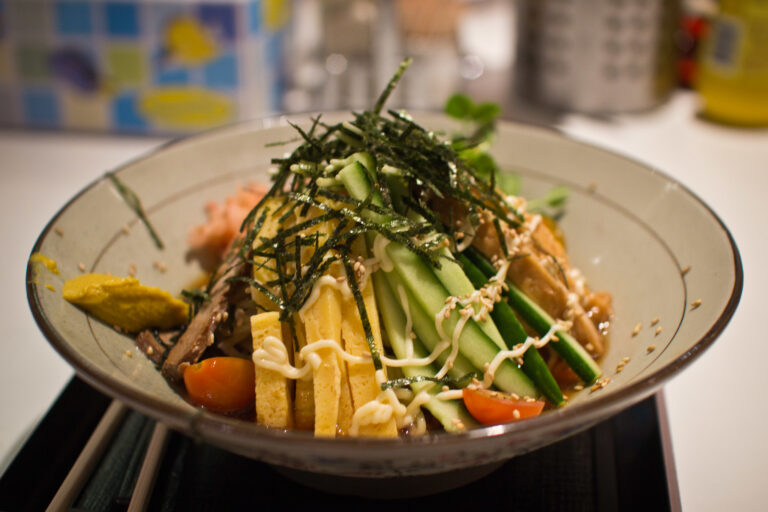
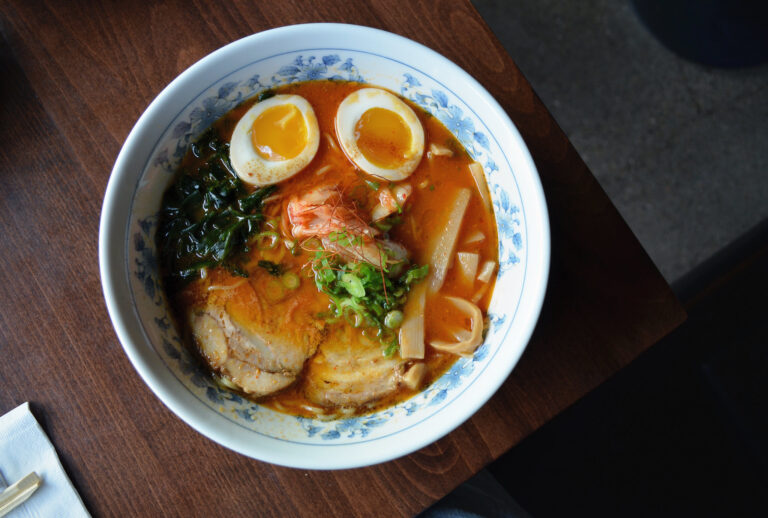
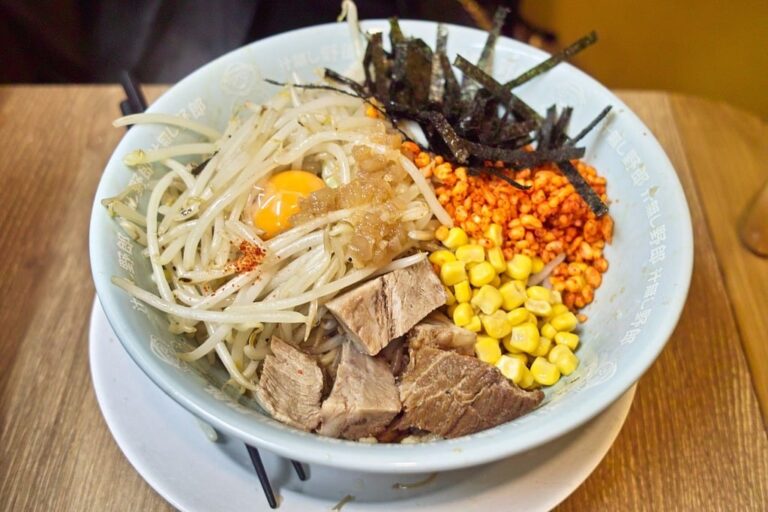
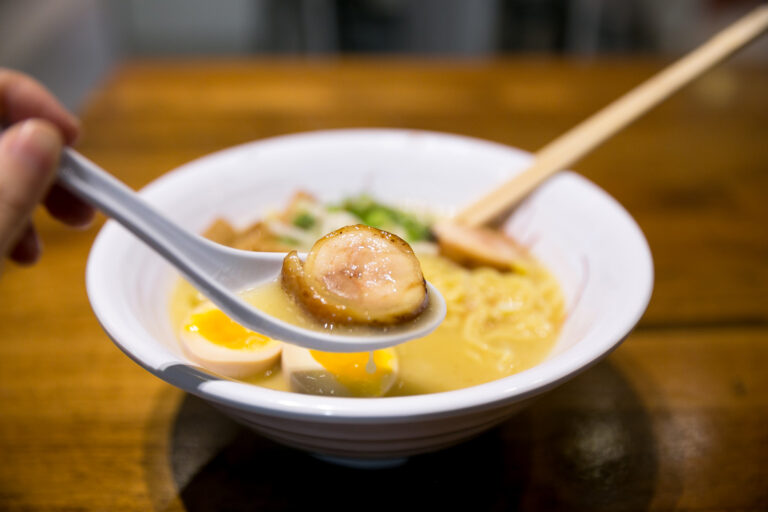
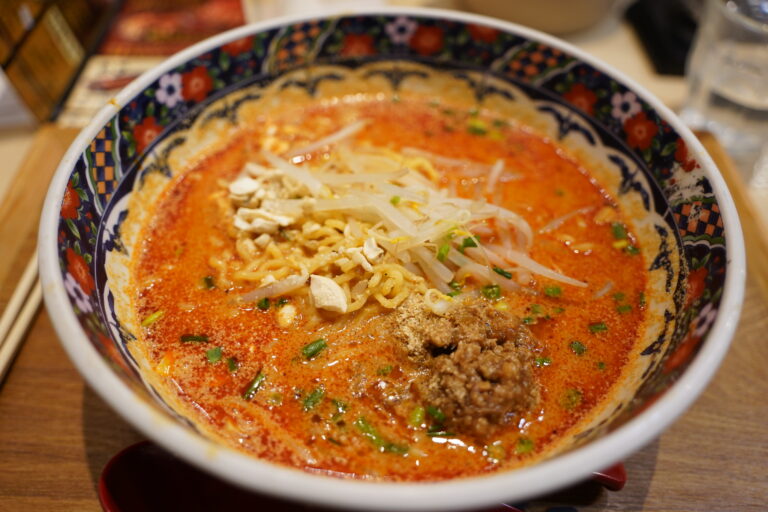
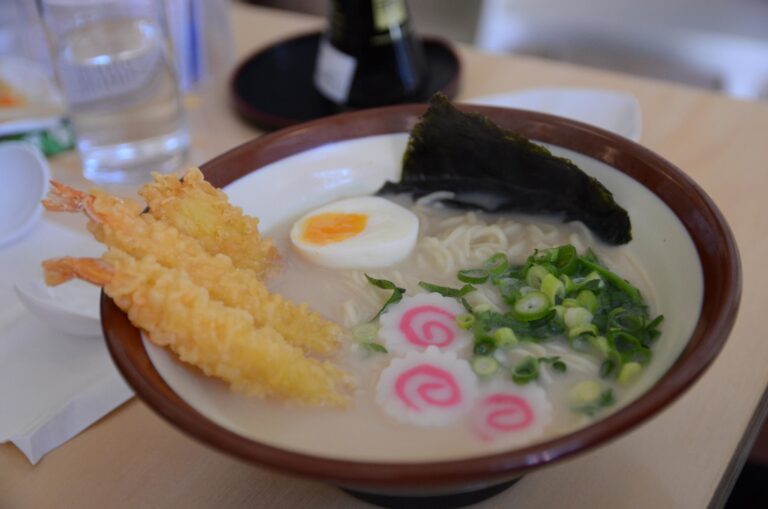
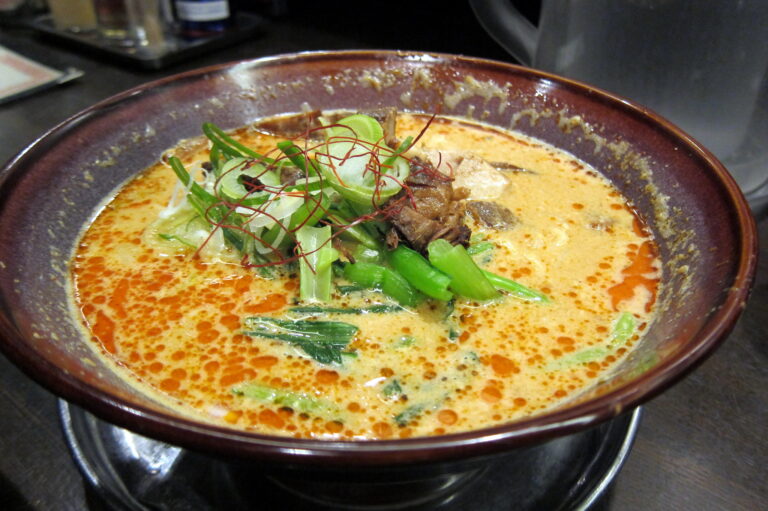
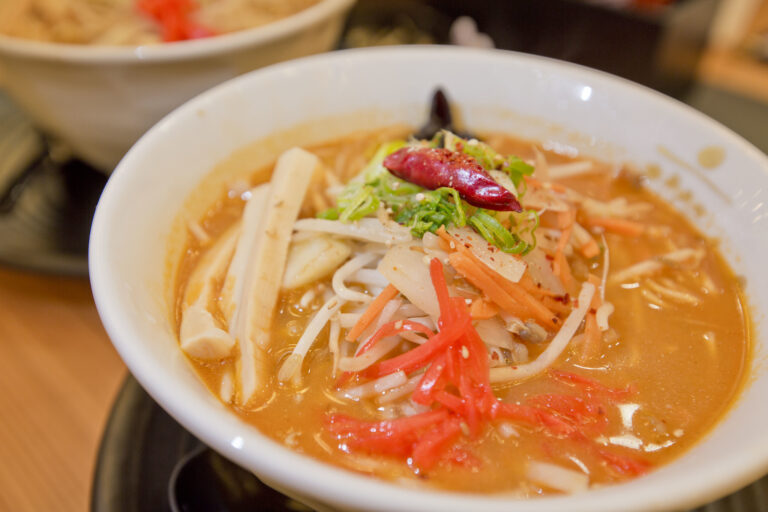
![Types of Ramen: Hakata Ramen. Image courtesy of [cipher] via Flickr Commons.](https://ramendatabase.com/wp-content/uploads/2024/06/Types-of-Ramen_Hakata-Ramen-768x510.jpg)
